Volume 2 | Number 1 | May 2010
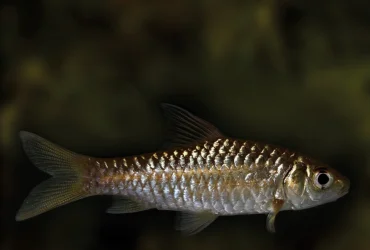 v2i1.28
v2i1.28ISSN: 1800-427X (print)
eISSN: 1800-427X (online)
DOI:10.47605/tapro.v2i1.28
Submitted date: 22 December 2009
Accepted date: 07 October 2010
Published date: 30 December 2010
Pp. 64.
An observation of Cryptozona bistrialis (Gastropoda : Ariophantidae) feeds on Aulopoma sp. (Gastropoda : Cyclophoridae) in an Anthropogenic habitat, Sri Lanka
J.H. Chatura Madushantha Fernando*
*E-mail: chathumadhushantha@gmail.com
Cryptozona bistrialis is a native land snail that ranges across forests of the dry and intermediate zones; in the wet zone it is restricted to cultivated habitats below 1,000 m elevation. This short communication describes an observation of feeding behaviour in C. bistrialis.
Section Editor: Dinarzarde Raheem
eISSN: 1800-427X (online)
DOI:10.47605/tapro.v2i1.28
Submitted date: 22 December 2009
Accepted date: 07 October 2010
Published date: 30 December 2010
Pp. 64.
An observation of Cryptozona bistrialis (Gastropoda : Ariophantidae) feeds on Aulopoma sp. (Gastropoda : Cyclophoridae) in an Anthropogenic habitat, Sri Lanka
J.H. Chatura Madushantha Fernando*
*E-mail: chathumadhushantha@gmail.com
Cryptozona bistrialis is a native land snail that ranges across forests of the dry and intermediate zones; in the wet zone it is restricted to cultivated habitats below 1,000 m elevation. This short communication describes an observation of feeding behaviour in C. bistrialis.
Section Editor: Dinarzarde Raheem
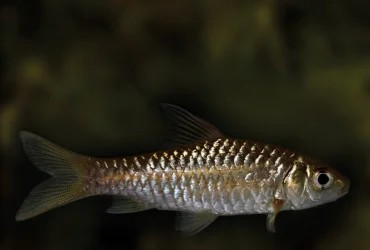 v2i1.27
v2i1.27ISSN: 1800-427X (print)
eISSN: 1800-427X (online)
DOI:10.47605/tapro.v2i1.27
Submitted date: 29 March 2010
Accepted date: 20 April 2010
Published date: 30 December 2010
Pp. 48–63, Pls 2–3.
CURRENT STATUS OF FAUNAL DIVERSITY IN BELLANWILA – ATTIDIYA SANCTUARY, COLOMBO DISTRICT – SRI LANKA
D.M.S. Suranjan Karunarathna, A.A. Thasun Amarasinghe*, Dinesh E. Gabadage, Mohomed M. Bahir & Lee E. Harding
*Corresponding author. E-mail: thasun.taprobanica@gmail.com
Abstract
The present survey shows the biodiversity decline in Bellanwila - Attidiya Sanctuary (BAS). A total of 152 species of vertebrates and 75 species of butterflies are recorded from BAS. Sixteen of these species are endemic, and five of them are nationally threatened. Vertebrates represent 11 amphibians, 27 reptiles, 22 fresh water fishes, 78 birds and 14 mammal species. Habitat destruction, industrial toxic waste and garbage dumping are the major threats to the biota of the BAS.
Key words : Biodiversity decline, Colombo, conservation, endangered species, threats, wetland
Section Editor: Upali Amarasinghe
eISSN: 1800-427X (online)
DOI:10.47605/tapro.v2i1.27
Submitted date: 29 March 2010
Accepted date: 20 April 2010
Published date: 30 December 2010
Pp. 48–63, Pls 2–3.
CURRENT STATUS OF FAUNAL DIVERSITY IN BELLANWILA – ATTIDIYA SANCTUARY, COLOMBO DISTRICT – SRI LANKA
D.M.S. Suranjan Karunarathna, A.A. Thasun Amarasinghe*, Dinesh E. Gabadage, Mohomed M. Bahir & Lee E. Harding
*Corresponding author. E-mail: thasun.taprobanica@gmail.com
Abstract
The present survey shows the biodiversity decline in Bellanwila - Attidiya Sanctuary (BAS). A total of 152 species of vertebrates and 75 species of butterflies are recorded from BAS. Sixteen of these species are endemic, and five of them are nationally threatened. Vertebrates represent 11 amphibians, 27 reptiles, 22 fresh water fishes, 78 birds and 14 mammal species. Habitat destruction, industrial toxic waste and garbage dumping are the major threats to the biota of the BAS.
Key words : Biodiversity decline, Colombo, conservation, endangered species, threats, wetland
Section Editor: Upali Amarasinghe
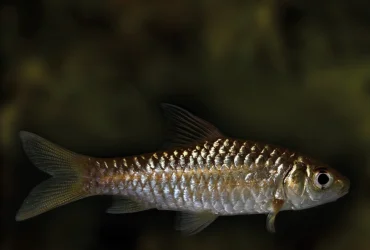 v2i1.26
v2i1.26ISSN: 1800-427X (print)
eISSN: 1800-427X (online)
DOI:10.47605/tapro.v2i1.26
Submitted date: 29 March 2010
Accepted date: 22 December 2010
Published date: 30 December 2010
Pp. 30–47.
THE EFFECTS OF CLIMATE CHANGE ON GLOBAL WILDLIFE AND TERRESTRIAL ECOSYSTEMS
Thilina Surasinghe*
*E-mail: tsurasi@clemson.edu
Abstract
Climate change and biodiversity are interconnected, where climate change is reshaping global biodiversity. Unsustainable human activities that increase accumulation of greenhouse gases and hinder the natural balance of atmospheric greenhouse gases aggravate the effects of climate change on biodiversity. Rising seas-levels could inundate coastal habitats and stem the flow of nutrients from the ocean to the terrestrial ecosystems. Altered climate regimes directly affect wildlife, their behavior, migration, foraging, growth and reproduction. Climate change could disturb the dynamic equilibrium of terrestrial ecosystems by affecting ecosystem productivity, biomass production, hydrological balance, and trophic interactions. Further, climate change intensifies natural disasters and shifts in natural disturbance regimes. Such processes impose physiological and environmental stress on terrestrial ecosystems which adversely affect the ecosystem resistance and resilience. Moreover, warming atmosphere causes thermal optima to shift towards high latitudes and high altitudes. Terrestrial biota readily responds to temperature, where both flora and fauna alter distributions toward more favorable climatic conditions. Some climatic parameters that drive life history events, such as photoperiod, are fixed, while others, such as the timing of spring weather, are changing because of greenhouse gasses. The resulting mismatch between fixed and variable drivers of phenology, such as in mating, breeding, migration, hibernation, and post-hibernation activities, will disadvantage some species and benefit others. This will result in new ecosystems. Warming temperature favors biological activities of wildlife pathogens, since high temperature increases breeding rate, survival, hatching success and transmission of wildlife parasites and disease-causing agents. Climate change dissociates species interactions, mutual associations and a multitude of ecosystem functions. Ultimately, climate change predisposes native terrestrial wildlife to extinction and alters the functions and structure of terrestrial ecosystems. Biodiversity provides ecosystem services including the regulation and mitigation of the adverse impacts of climate change. Therefore, biodiversity conservation and terrestrial ecosystem management is critical to address climate change. Robust climate-oriented models with the use of GIS and remote sensing technology are needed to make effective predictions about the spatial and temporal effects of climate change.
Key words : Biodiversity, global warming, phenological changes, range shifting, wildlife diseases
Section Editor: Lee Harding
eISSN: 1800-427X (online)
DOI:10.47605/tapro.v2i1.26
Submitted date: 29 March 2010
Accepted date: 22 December 2010
Published date: 30 December 2010
Pp. 30–47.
THE EFFECTS OF CLIMATE CHANGE ON GLOBAL WILDLIFE AND TERRESTRIAL ECOSYSTEMS
Thilina Surasinghe*
*E-mail: tsurasi@clemson.edu
Abstract
Climate change and biodiversity are interconnected, where climate change is reshaping global biodiversity. Unsustainable human activities that increase accumulation of greenhouse gases and hinder the natural balance of atmospheric greenhouse gases aggravate the effects of climate change on biodiversity. Rising seas-levels could inundate coastal habitats and stem the flow of nutrients from the ocean to the terrestrial ecosystems. Altered climate regimes directly affect wildlife, their behavior, migration, foraging, growth and reproduction. Climate change could disturb the dynamic equilibrium of terrestrial ecosystems by affecting ecosystem productivity, biomass production, hydrological balance, and trophic interactions. Further, climate change intensifies natural disasters and shifts in natural disturbance regimes. Such processes impose physiological and environmental stress on terrestrial ecosystems which adversely affect the ecosystem resistance and resilience. Moreover, warming atmosphere causes thermal optima to shift towards high latitudes and high altitudes. Terrestrial biota readily responds to temperature, where both flora and fauna alter distributions toward more favorable climatic conditions. Some climatic parameters that drive life history events, such as photoperiod, are fixed, while others, such as the timing of spring weather, are changing because of greenhouse gasses. The resulting mismatch between fixed and variable drivers of phenology, such as in mating, breeding, migration, hibernation, and post-hibernation activities, will disadvantage some species and benefit others. This will result in new ecosystems. Warming temperature favors biological activities of wildlife pathogens, since high temperature increases breeding rate, survival, hatching success and transmission of wildlife parasites and disease-causing agents. Climate change dissociates species interactions, mutual associations and a multitude of ecosystem functions. Ultimately, climate change predisposes native terrestrial wildlife to extinction and alters the functions and structure of terrestrial ecosystems. Biodiversity provides ecosystem services including the regulation and mitigation of the adverse impacts of climate change. Therefore, biodiversity conservation and terrestrial ecosystem management is critical to address climate change. Robust climate-oriented models with the use of GIS and remote sensing technology are needed to make effective predictions about the spatial and temporal effects of climate change.
Key words : Biodiversity, global warming, phenological changes, range shifting, wildlife diseases
Section Editor: Lee Harding
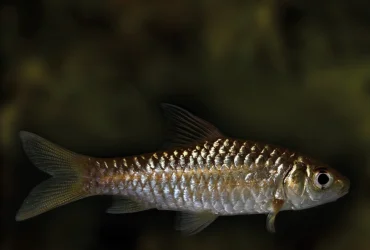 v2i1.25
v2i1.25ISSN: 1800-427X (print)
eISSN: 1800-427X (online)
DOI:10.47605/tapro.v2i1.25
Submitted date: 29 March 2010
Accepted date: 07 October 2010
Published date: 30 December 2010
Pp. 25–29, Pl. 1
ADDRESSING THE WALLACEAN SHORTFALL : AN UPDATED CHECKLIST OF ICTHYOFAUNA OF CHEMBARAMPAKKAM TANK
J.D. Marcus Knight*
*E-mail: jdmarcusknight@yahoo.co.in
Abstract
Fish fauna of Chennai has been systematically surveyed for the past 100 years. Subsequent surveys have not been as comprehensive as the first study. As a result premature conclusions about species extinctions and species displacement by introduced species have emerged in publications from time to time. In this paper, I present a comprehensive survey of Chembarampakkam tank, one of the freshwater tanks in Chennai which has been surveyed for the past 100 years. The results highlight the significance of Wallacean shortfall.
Key words : Chembarampakkam, Chennai, diversity, freshwater fish, Madras, non-native
Section Editor: Rema Devi
eISSN: 1800-427X (online)
DOI:10.47605/tapro.v2i1.25
Submitted date: 29 March 2010
Accepted date: 07 October 2010
Published date: 30 December 2010
Pp. 25–29, Pl. 1
ADDRESSING THE WALLACEAN SHORTFALL : AN UPDATED CHECKLIST OF ICTHYOFAUNA OF CHEMBARAMPAKKAM TANK
J.D. Marcus Knight*
*E-mail: jdmarcusknight@yahoo.co.in
Abstract
Fish fauna of Chennai has been systematically surveyed for the past 100 years. Subsequent surveys have not been as comprehensive as the first study. As a result premature conclusions about species extinctions and species displacement by introduced species have emerged in publications from time to time. In this paper, I present a comprehensive survey of Chembarampakkam tank, one of the freshwater tanks in Chennai which has been surveyed for the past 100 years. The results highlight the significance of Wallacean shortfall.
Key words : Chembarampakkam, Chennai, diversity, freshwater fish, Madras, non-native
Section Editor: Rema Devi
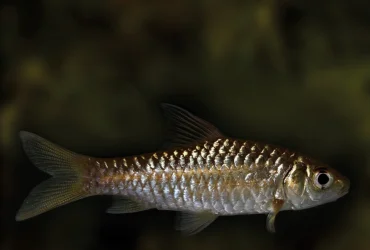 v2i1.24
v2i1.24ISSN: 1800-427X (print)
eISSN: 1800-427X (online)
DOI:10.47605/tapro.v2i1.24
Submitted date: 29 March 2010
Accepted date: 18 December 2010
Published date: 30 December 2010
Pp. 6–24.
DESCRIBING NEW SPECIES
Alain Dubois*
*E-mail: sapo421@gmail.com
Abstract
Describing new species is a fundamental work for the knowledge of the endangered biodiversity of our planet, a large proportion of which is still unknown to science. To be really useful to all other comparative disciplines of biology, this work must be carried out in a professional manner. This requires following a strict methodology for the taxonomic recognition of species and for their nomenclature. The taxonomic work must be based upon actual specimens, kept in permanent collections, and on phenetic and cladistic analyses and comparisons based on their characters, attributes and relacters. Different “kinds of species” (bisexual panmictic, parthenogenetic, gynogenetic, etc.) must be distinguished and characterized. For the progress of taxonomic knowledge, revisionary works of supraspecific taxa are much more important than mere descriptions of “new species”. Descriptions and diagnoses must be carried out in a standardized manner. As for the nomenclatural methodology, taxonomists should strictly follow the rules of the Code, in particular regarding its three-level structure (distinguishing availability, allocation and validity of nomina), the principles of coordination, of nomenclatural foundation, of onomatophores and of priority. No new nomen should be created if an available one exists, possibly “hidden” in a synonymy, for the species recognized by modern work. More attention and care should be paid by taxonomists to the problems related to the etymology, aspect and length of nomina: for a proper communication with all other biologists and nonbiologists, the latter should be short, euphonious, clearly distinct and original.
Key words : Descriptions, diagnoses, methodology, nomenclature, nomina, specimens, taxa, taxonomy
Section Editor: Colin Groves
eISSN: 1800-427X (online)
DOI:10.47605/tapro.v2i1.24
Submitted date: 29 March 2010
Accepted date: 18 December 2010
Published date: 30 December 2010
Pp. 6–24.
DESCRIBING NEW SPECIES
Alain Dubois*
*E-mail: sapo421@gmail.com
Abstract
Describing new species is a fundamental work for the knowledge of the endangered biodiversity of our planet, a large proportion of which is still unknown to science. To be really useful to all other comparative disciplines of biology, this work must be carried out in a professional manner. This requires following a strict methodology for the taxonomic recognition of species and for their nomenclature. The taxonomic work must be based upon actual specimens, kept in permanent collections, and on phenetic and cladistic analyses and comparisons based on their characters, attributes and relacters. Different “kinds of species” (bisexual panmictic, parthenogenetic, gynogenetic, etc.) must be distinguished and characterized. For the progress of taxonomic knowledge, revisionary works of supraspecific taxa are much more important than mere descriptions of “new species”. Descriptions and diagnoses must be carried out in a standardized manner. As for the nomenclatural methodology, taxonomists should strictly follow the rules of the Code, in particular regarding its three-level structure (distinguishing availability, allocation and validity of nomina), the principles of coordination, of nomenclatural foundation, of onomatophores and of priority. No new nomen should be created if an available one exists, possibly “hidden” in a synonymy, for the species recognized by modern work. More attention and care should be paid by taxonomists to the problems related to the etymology, aspect and length of nomina: for a proper communication with all other biologists and nonbiologists, the latter should be short, euphonious, clearly distinct and original.
Key words : Descriptions, diagnoses, methodology, nomenclature, nomina, specimens, taxa, taxonomy
Section Editor: Colin Groves
Hubungi Kami
The ultimate aim of the journal is to provide an effective medium for communication of the latest and best scientific information.
Copyright © 2020 Taprobanica. All Rights Reserved
Jasa Pembuatan Website by IKT




